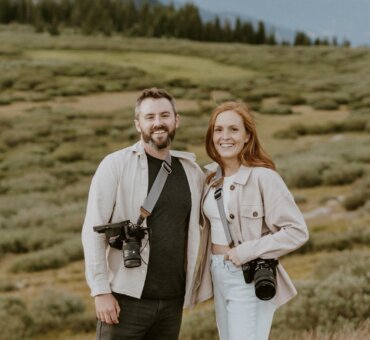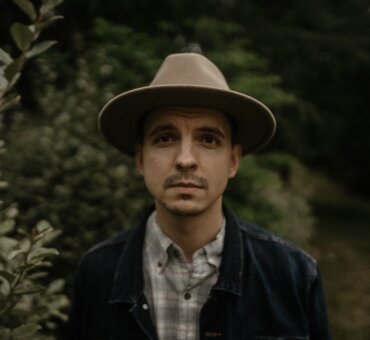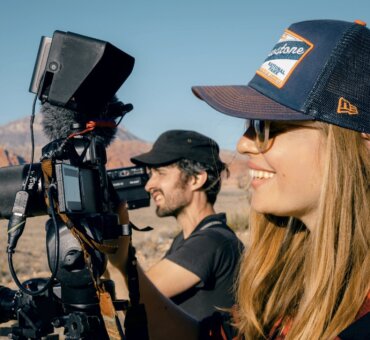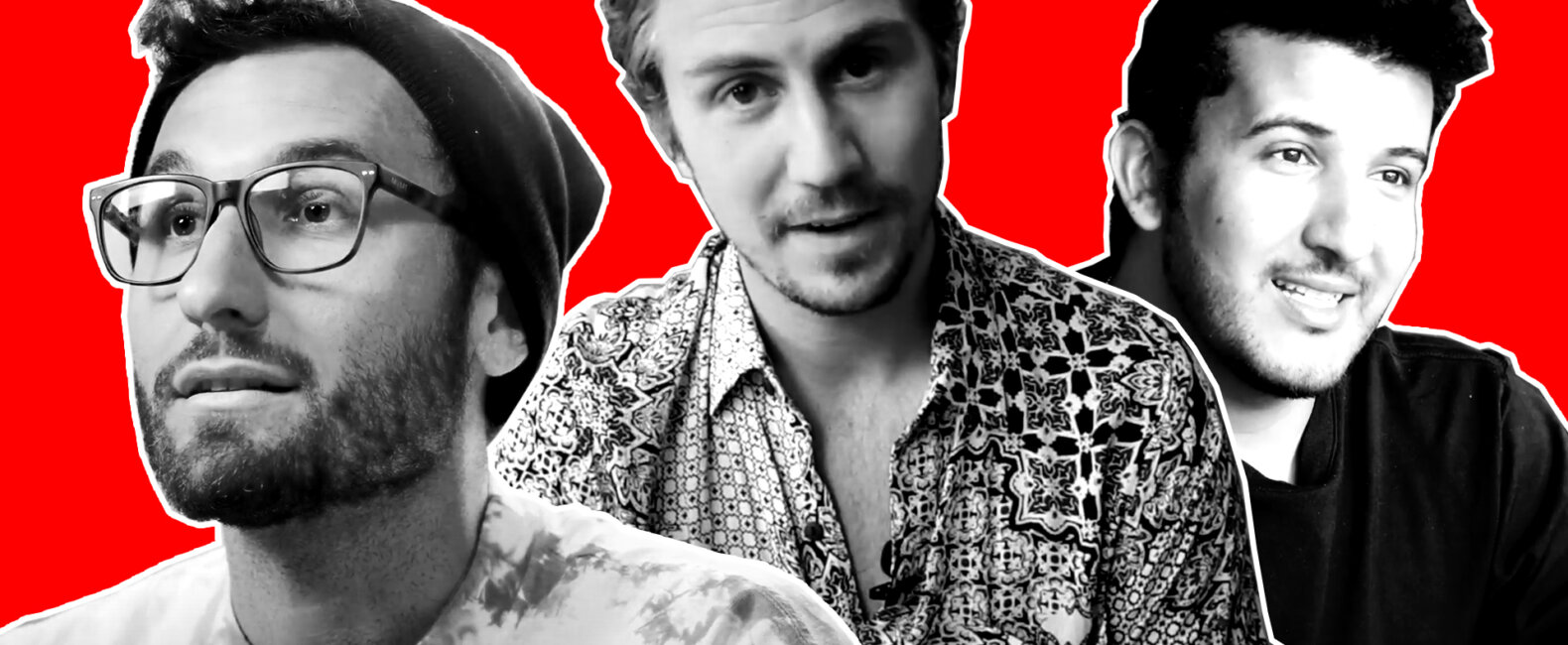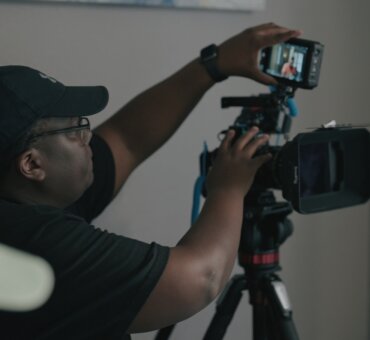In our first episode of YouTube Masters — an educational series from leading creators, for creators — Yes Theory shares 8 tips for how to start a YouTube channel from the ground up. With over 5 million subscribers, it’s safe to say they know what they’re talking about. So start your channel with help from the best. Watch below to hear from Thomas Brag, Matt Dajer, and Ammar Kandil of Yes Theory.
Tip #1: It’s going to be scary at first.
Thomas Brag: This is an exciting opportunity for us to reflect on what’s gotten us to where we are today and what we learned along the way. The reality is, that it’s a never-ending pursuit. Trying any kind of career in creativity means you’re going to be constantly remaining in a state of learning. Which might sound daunting to some, but is also, in the end, a very exciting pursuit.
Which brings me to my first point — when you are beginning, whatever you’re going to be doing is probably very scary. Picture yourself going to class for the first time ever. Or going to a new job. You’re probably going to be pretty nervous — and the reason why you’re nervous is that this is the first time you’re ever doing this. Which is exactly what’s happening the first time you create. The first time you open an editing software, you’re probably terrified. The first time you miss-shoot with your camera or don’t come off as comfortable hosting as you were hoping you would, is just a reflection of your lack of experience.
So, the best thing to do to start is just to make a lot of things. You have to create a large volume of work. It’s very normal to feel intimidated at first — I was terrified. I started off by asking a friend who knew how to edit to just show me how the basics of the software work. Then, I started by doing comedy skits and I had no idea if this was what I wanted to do, but I just started. I was willing to be uncomfortable and embarrass myself in front of the camera to at least get the wheels rolling.
The issue you’re going to run into is that there’s going to be a gap between what you want to make and what you’re actually making. You’re going to be able to tell that the quality of your videos, maybe the quality of how you come off on camera, isn’t matching exactly what you wanted to look like. That might discourage some people. A lot of people give up at that point. But, my advice to all of you watching is to just stick through that. You have to just continue making videos and practicing and eventually getting more and more comfortable with the tangible skills of filmmaking to make those less intimidating over time, to then be able to tap into your true inspiration later down the line.
Tip #2: Don’t give up.
As I mentioned, I started by doing comedy skits and I eventually pivoted into doing scripted bits with my friends, and then finally ended up meeting Matt and Ammar, where we decided to pursue Project 30 — which was doing 30 things we had never done before in 30 days and make a video about it. There was no plan beyond that. We hadn’t fully designed the architecture for Yes Theory or even come up with the phrase “Seek Discomfort” yet, but everything comes one piece at a time.
The main thing you have to remember is just to keep in motion. Continue iterating, not being afraid of getting stuck over details, or over insecurity, or over your lack of experience or knowledge. Over time those things will get better and you will feel more comfortable creating, making videos, editing, picking music — all of those things will come more and more naturally to you. Even if they don’t feel like they will right now.
Tip #3: Pay attention to what you watch.
My best advice to you: create as much as you possibly can, try a bunch of different styles, don’t limit yourself, and also, start paying attention to what kind of content and videos you’re consuming. Because those things will heavily impact what you end up making. I’ll pass it off to Matt, who will explain to you which artists we ended up stealing from for our inspiration.
Tip #4: When you’re making art, the key is to steal.
Matt Dajer: I want to talk to you guys about theft. Now, stealing and theft have negative connotations, but in art, I actually see it quite differently. There’s a book called Steal Like An Artist by a man named Austin Kleon. In the book, Kleon discusses how when you’re making art, especially in the beginning, the key is to steal. Now when he says steal, stealing is not necessarily plagiarizing — stealing is actually just getting inspiration from as many sources as possible. So for us, those sources of inspiration were three different groups and people.
The first one was The Buried Life — a group of four Canadian friends who crossed items off their bucket list and helped strangers cross items off of theirs. They were actually the inspiration for Project 30.
The second was Casey Neistat. A lot of you may know Casey, and when we first started in 2015, Casey’s vlogs were blowing up and we were watching them every single day. Casey had a way of storytelling that was so structured and so exciting to watch, and we were so inspired to use some of the tools that he had.
And finally, the last person is the late Anthony Bourdain. For years, Anthony Bourdain traveled the world experiencing new cultures and people and food and watching his show got us so thrilled to do the same once we had enough money to travel. In 2016, we had an opportunity to travel and we took it immediately. And we used a lot of the tricks that Anthony would use in his videos when he meets people, or when he tries new experiences.
Tip #5: Take your inspirations and make them your own.
So what we realized through all this (and what Austin Kleon talks about in his book) is the fact that everything around you and us, is stolen. The clothes that you wear, the way that you speak— it all comes from these sources around you. What ends up happening is you take these inspirations, but then you make them your own. That’s what ended up happening with us, and that’s what ends up happening with so many artists — you start with as many inspirations as you can and you recreate what these people have made to the best of your ability. You do that enough times that you get to a point where you created your own style.
For us, that was the goal from the beginning. When we first started, we were making videos that looked very similar to The Buried Life and looked very similar to Casey. Eventually, by constantly using the tools that they did, and constantly copying the style that they had, we eventually developed our own.
Tip #6: When you first start, you can steal as much as you want.
Which brings me to another point — if you’re starting off creatively right now, and you don’t have an audience, you are actually in the best-case scenario. Because you can steal, and copy, as much as you want. And again, I don’t mean plagiarize, I just mean gain inspiration and test it out.
So, go out there, find the inspirations around you, and make as much art as you possibly, possibly can. And in the process of finding your own voice, you’ll also find a community that resonates with that voice. And that’s where Ammar comes in. Where he’ll cover how to build community, not just an audience.
Tip #7: Be mindful of the relationship you’re creating with those who watch.
Ammar Kandil: My number one piece of advice to anyone starting right now is to be super mindful of the relationship they’re creating with the people that watch them. Whether that’s a transactional relationship — they just come to get something out of your videos and forget about you — or if it’s something that truly makes them think about you after they finish watching whatever it is that you put out.
For us, when we started in Project 30 in 2015, we wanted to know what was going to happen when we come out after the thirty days having done thirty things we’d never done before. It was a genuine experiment for us and the result of that was genuine videos that came out that made people identify with the spirit and the energy that we wanted to do Project 30 with. We were young, we were seeking out new things that could get us excited about life, and in that process, we were able to actually find these things and share with the people that were watching. So, the relationship became a lot deeper because people started to identify with the energy that they saw us seek discomfort with. People wanted to have some of that.
Tip #8: Identify your why.
That brings me to my point today: which is being able to build a community, not just an audience. And the number one thing that Yes Theory figured out early on that allowed us to build such a strong community all over the world, is the fact that we were able to identify what is our “why”. What is the thing that should make you — if you don’t know who I am — watching this video right now, feel connected with me and potentially, decide to come back to watch more of what I want to put out?
For us, we knew early on that people were watching Yes Theory because they were interested in the idea of obviously, saying yes, and seeking discomfort. So that made it a lot easier for people to feel connected to something that is just bigger than us. Because at the end of the day, people liking you or the type of videos you put out at a certain moment in time can be very fleeting and fragile. But to actually get people to connect with you because they believe in the same thing that you do, that is true power, and that is true influence. And for anyone out there with a genuine message that they want to get it across, that is how you build community and that is how you build something that can possibly outlive you.
Make sure that you subscribe to Musicbed’s YouTube channel if you are interested in watching more of YouTube Masters. For more from Yes Theory, check out their secret metric to success.




































































